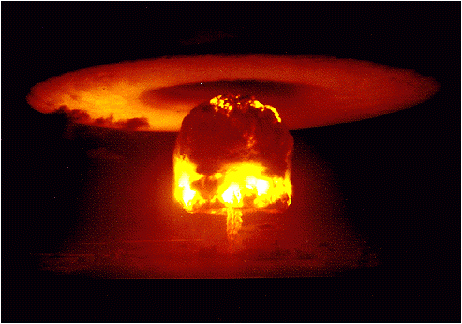Course: Physics 20a, Modern Physics
Location: 239 Abelson
Instructor: Prof. Fraden, 736-2888, room 314 Abelson, email: fraden@brandeis.edu.
Required texts:
Serway, Moses, and Moyer, Modern Physics 2nd ed., Saunders College Publishing.
Richard Rhodes, The Making of the Atomic Bomb, Simon & Schuster, New
York, 1988
Steven Wienberg, The First Three Minutes, Bantam Books, 1977.

Other Texts
Paul A. Tipler, Elementary Modern Physics (Worth Publishers, New York, 1992)
Richard P. Feynman, Robert B. Leighton, and Matthew Sands, The Feynman Lectures in Physics, (Addison-Wesley, Reading, Mass.,1963) vols. 1 - 3
Kenneth Krane, Modern Physics, 2nd ed. (Wiley, New York, 1995).
H. Ohanian, Modern Physics, 2nd edition (Prentice Hall, New York, 1995)
Richard P. Feynman, QED, the Strange Theory of Light and Matter (Princeton University Press, Princeton, 1985)
Structure: Lecture MWTH 10-11
- weekly homework, due the Monday after
assignment or next official class day:
-80% credit for late homework unless preauthorized.
- In class midterms on Feb 28 and Mar 25.
- Term paper due April 26. Oral presentations given during the week of April 26.
- Course grade is determined from homework, midterms, term paper, and final weighted equally.
- Homework is graded on an absolute scale: 90% = A, 80% = B, 70% = C. You are encouraged to work together on homework.
Contents: Chapters 1-9 and 13-15 in detail. Additional topics
covered in term paper presentations.
The course will follow the book , Modern Physics. The Schrodinger description of one-dimensional quantum mechanics and Copenhagen interpretation are covered in depth. Advanced topics such as atomic physics, chemistry, solid state and statistical physics, nuclear and particle physics, and astrophysics are briefly touched upon. Students will select one of the advanced topics for a term paper and oral presentation. An estimate of the number of lectures per chapter is provided.
In parallel we will be reading The Making of the Atomic Bomb, by Richard
Rhodes, a historical description of the development of the atomic bomb that
describes the discoveries of the early 20th century that led to
quantum mechanics and modern physics. Each class period will begin with two
students giving a short (5 minute) "sound bite" (brief synopsis) of about 15 pages of Rhodes' book. We will flesh out the
qualitative descriptions of modern physics that Rhodes describes with the
models discussed in our textbook Modern Physics.
In the 19th century the physical sciences scored
a number of successes. The theory of electricity and magnetism was completed
and many technological applications were invented (electric motors, lights,
telephone). Classical mechanics predicted planetary orbits to great accuracy
and as chemistry progressed notions of an atomic basis of matter were gaining
acceptance. Physicists and philosophers believed in a mechanistic universe
where natural laws ruled all. However, in the dawn of the 20th century
the structure of the atom remained completely obscure. No physical model of the
atom was consistent with the known laws of physics and in the first decade of
the 20th century increasing numbers of experiments were inconsistent
with current theory.
The story of the resolution of this clash between theory and experiment is told in our course. The Making of the Atomic Bomb traces historically the evolution of physics through the 20th century. We see how the ancient dream of the alchemist, of turning lead to gold, is realized by physicists. However, their discovery of the Philosopher’s Stone, or the transmutation of elements doesn’t lead to riches, but instead unleashes an awesome and terrible force, atomic weapons.
Chapter 1: Special Relativity;
4 lectures.
Chapter 2: Quantum Theory of Light; 3 lectures.
Chapter 3: Particle Nature of Matter; 3 lectures.
Chapter 4. Matter Waves; 3 lectures.
Chapter 5. Quantum Mechanics in One Dimension; 4 lectures.
Chapter 6. Tunneling Phenomena; 2 lectures.
Chapter 7. Quantum Mechanics in Three Dimensions; 2 lectures.
Chapter 8. Atomic Structure; 3 lectures.
Chapter 9. Statistical Physics; 3 lectures.
Chapter 13. Nuclear Physics; 2 lectures.
Chapter 14. Nuclear Physics Applications; 2 lectures.
Chapter 15. Particle Physics and Cosmology; 3 lectures
Term project presentations; 3 lectures.